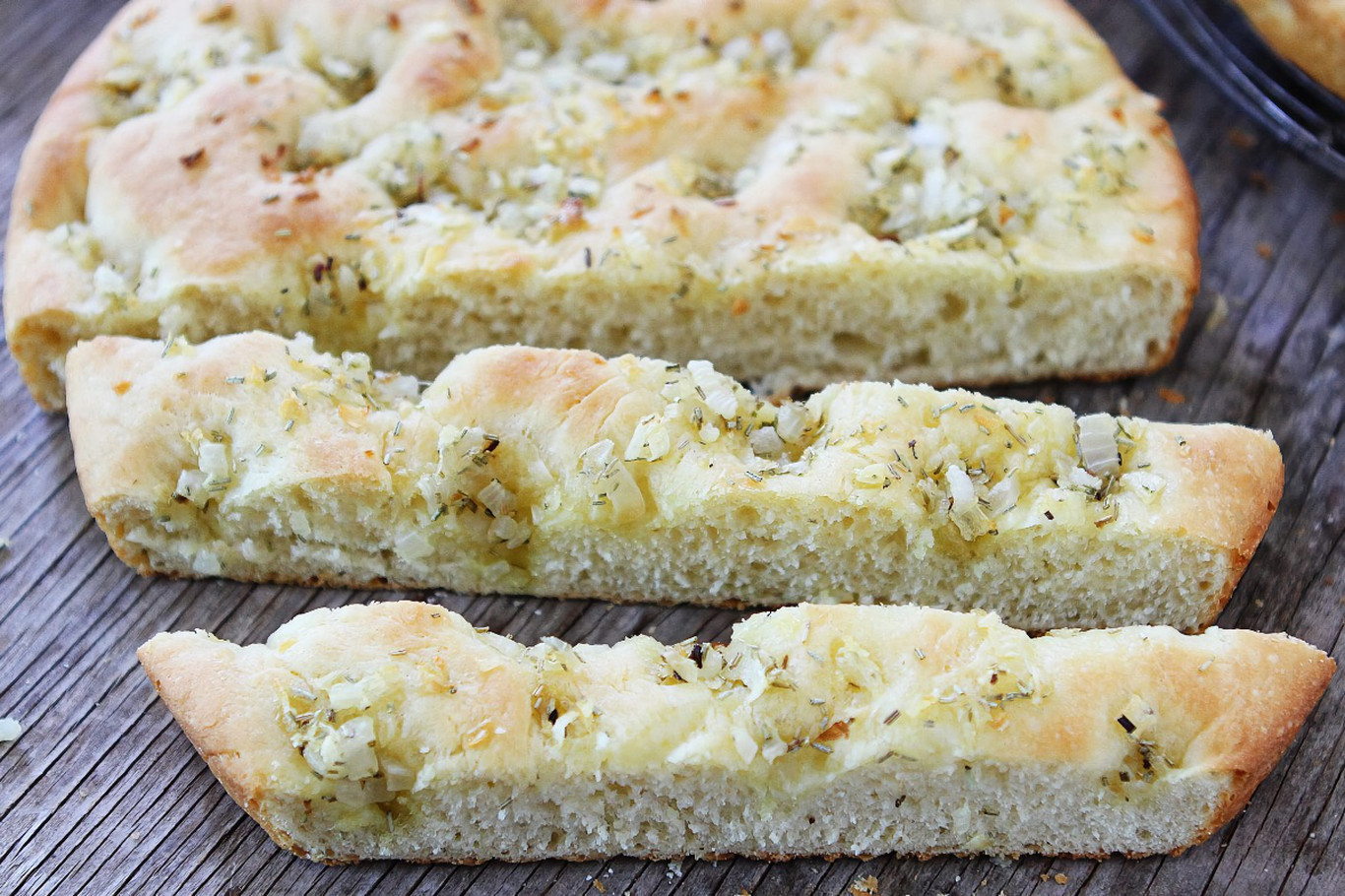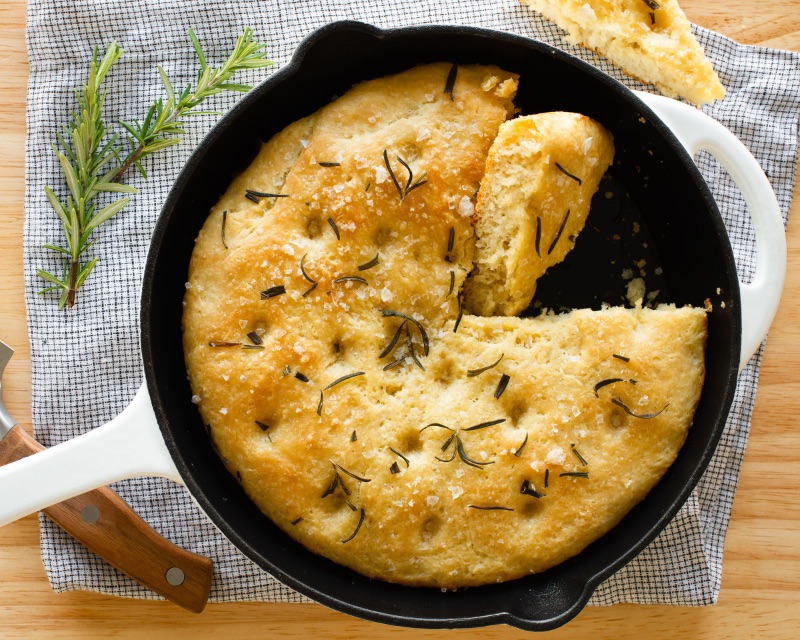There's something extra special about bringing warm, homemade bread to the table -- perhaps it's because it's such an infrequent occurrence. If you'd like to start doing it more often, I suggest you start with this focaccia. It's rich with olive oil (which keeps it extra moist), topped with fragrant rosemary, and baked in a skillet to give it a perfectly golden, crispy crust. Oh, and it comes together even easier than you could imagine.
This focaccia recipe is as fuss-free as bread recipes go. The dough comes together quickly in the food processor, then is left to rise for a couple of hours while you prep the rest of dinner (or relax and sip a glass of wine). Return to it when it has doubled in size, and then stretch it out in an oven-safe skillet. Cast iron is best for achieving a super-crispy crust, but any oven-proof skillet will work. Drizzle it with extra-virgin olive oil, and top with fresh rosemary and flaky salt; then bake until puffed and golden.
This recipe leaves so much room for experimentation too. I've been making so much focaccia at home recently that I've quickly found out the sky's the limit. I like playing around with different herbs from my garden, or sprinkling the top with sesame seeds. Chopped sun-dried tomatoes and thinly sliced lemon are also delicious, as is my current favorite: everything bagel seasoning.
No-Knead Skillet Focaccia
Serves 8 to 10
Prep time: 3 hours to 4 hours
Cooking time: 20 minutes to 25 minutes
2 cups all-purpose flour
1 teaspoon kosher salt
1 teaspoon dry instant yeast
3/4 cup lukewarm water
3 tablespoons plus 3 teaspoons extra-virgin olive oil, divided
2 teaspoons coarsely chopped fresh rosemary leaves
1/4 teaspoon flaky sea salt
Place the flour, salt and yeast in a food processor fitted with the blade attachment, and pulse to combine. Add the water and 2 tablespoons of the oil. Pulse until a rough ball of dough forms, about 15 (2-second) pulses.
Drizzle 2 teaspoons of the oil in a large bowl. Flour your hands, scoop the dough out of the food processor, and form into a smooth ball. Place the ball of dough in the oiled bowl and turn it so it's coated on all sides. Cover with plastic wrap or a kitchen towel and let it sit at warm room temperature until doubled in size, 2 to 3 hours.
Drizzle 1 teaspoon of the oil in a 10-inch cast iron or other ovenproof skillet and rub it over the bottom and sides. Punch down the dough and place the dough in the skillet. Using your fingertips, coax and stretch the dough to cover the bottom of the skillet and reach all the way to the edges. Cover with plastic wrap or a kitchen towel, and let rest at warm room temperature until puffed and slightly risen, 30 to 40 minutes. Meanwhile, arrange a rack in the middle of the oven and heat to 450 F.
Use your fingertips to gently dimple the surface of the dough. Drizzle the remaining 1 tablespoon of oil over the dough so that it pools in some of the indentations. Sprinkle with the rosemary and flaky salt.
Place in the oven and immediately turn the heat down to 400 F. Bake until lightly golden-brown, 20 to 25 minutes.
Remove from the oven, and cool for at least 15 minutes before slicing and serving. Focaccia is best eaten when warm, but is also good at room temperature. If the crust gets too soft, reheat in a 350 F oven to crisp it up.
Recipe notes: To make ahead: The dough can also be left in the covered bowl to rise overnight in the refrigerator -- the slower rise actually provides extra flavor. In the morning, transfer the cold dough to the skillet and allow it to warm up a little, about 20 minutes, before stretching it and proceeding with the recipe.
Storage: The focaccia is best the day it is made but can be stored, well-wrapped, at room temperature for up to one day. The crust will soften, but it can be warmed and crisped in a 350 F oven for a few minutes. Leftover focaccia also freezes exceptionally well. Let it defrost at room temperature and then reheat in a 350 F oven for a few minutes.
Topping options: There is plenty of experimentation to be had when it comes to focaccia toppings. Aside from rosemary, other herbs like thyme and oregano, thinly sliced lemons, pitted chopped olives, thick slices of fresh garlic or shallots, a sprinkling of Parmesan cheese, and even everything bagel seasoning are great topping options.
This article is written by Sheela Prakash from The Kitchn and was legally licensed via the Tribune Content Agency through the NewsCred publisher network. Please direct all licensing questions to legal@newscred.com.









